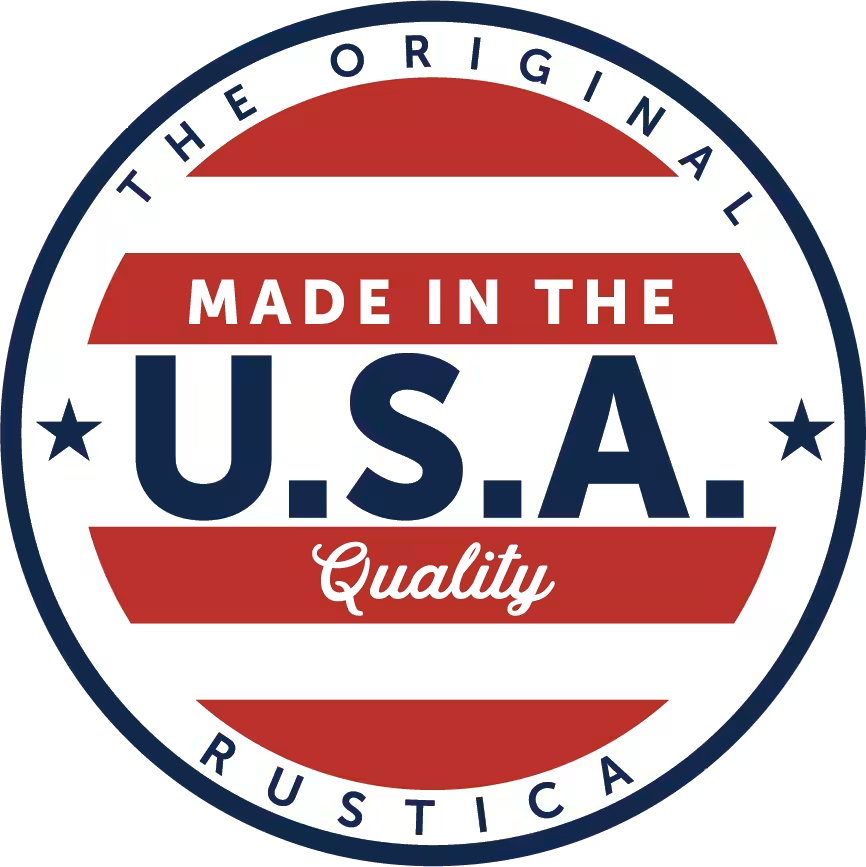800-891-8312
FREE SHIPPING* Most orders over $500 qualify. Free shipping applies to Barn Door Hardware, Barn Doors, and Pocket Doors over $500. Front doors, interior doors, shower doors, any oversized door (wider than 3ft and taller than 7ft) and any special order doors have shipping costs which are calculated at checkout. Some barn door hardware track lengths do not qualify for free shipping.

15 Types of Strike Plates for Doors
Thursday, December 12th, 2024
Share
A strike plate is a key part of the doorframe that often goes unnoticed. This small piece of hardware ensures your door operates correctly, so it's important to install the right strike plate for your door.
If you’re not familiar with the door jamb or its location, check out our article that explains the different parts of a door. This will help you understand door anatomy, which can be useful to know if you ever have any door repair projects.
The hole in the strike plate aligns perfectly with the door knob’s latch. When the door closes, the latch slides into the strike plate, creating the “click” sound you hear as the latch locks into place.
The strike plate keeps the door latched into place. Even if you push on the door, it will remain closed because the door’s latch is firmly within the strike plate hole. This, of course, is essential for a properly functioning door.
Some strike plates (such as a security strike plate) have two holes to accommodate a locking mechanism. With these types of strike plates, there’s a hole for the door knob latch as well as the deadbolt latch or locking mechanism.
A misaligned or damaged strike plate can prevent the door from latching properly. If you’re trying to figure out how to fix a door that won’t latch, one of the first things you’ll want to investigate the strike plate.
A standard strike plate is sometimes called a full lip strike plate or a T-strike plate. However, it typically has less of a curved edge compared to full lip or T-strike plates. Standard strike plates can feature either rounded or square edges, each with its own benefits, which are explained below.
Standard strike plates are ideal for residential interior doors. They are designed to fit standard interior door latches, with the strike plate hole sized to match the shape and dimensions of these latches.
If you need to replace an interior door strike plate, this type is a great option. It's easy to install and available in various metal finishes, like satin nickel or brass, to match your existing door hardware.
Unlike most door latch strike plates, the deadbolt strike plate does not have a curved lip on one side. This is because the deadbolt is turned into the strike plate hole once the door is already closed.
Deadbolt strike plates come in a range of options, varying in security and installation difficulty. Heavy-duty strike plates, for example, are reinforced to help protect against forced entry. These typically have four screw holes instead of two and may require longer screws for proper installation.
Some deadbolt strike plates come as a box unit, and may require a reinforced door frame. You’ll want to consider professional installation for these types of deadbolt strike plates.
Deadbolt strike plates are best for exterior residential doors that have a standard deadbolt lock. If your door has a more complex locking mechanism (such as a mortise lock), you’ll need to buy specific strike plate to match it.
One of the most common security strike plate designs is a large strike plate that combines the standard door latch strike plate and the deadbolt strike plate. With the deadbolt and door latch fitting into the same strike plate, it’s much harder to break the door down with force.
Another type of security strike plate features two long metal studs that extend into the wall studs beyond the door frame. This design is specifically for a deadbolt latch and does not combine the strike holes for the door latch and deadbolt.
A basic security strike plate design is a deadbolt strike plate with four screw holes instead of two.
The key to any security strike plate is to install it with long screws that go all the way into the wall studs. Standard strike plate screws only secure into the door frame, making them less durable than those anchored into the studs.
Security strike plates are ideal for exterior doors and for those with high-security needs. They are best for security or safety rated doors.
This strike plate is shaped like a sideways capital T, with the extended curved lip going over the edge of the door jamb. This curved lip prevents friction when the door latch brushes against it.
The shape of this strike plate requires the door frame to be prepared to fit it. While many newer homes are built with T-strike plates in mind, older homes may have a strike plate mortise (the recessed area in the door frame) that doesn't match the T-strike plate.
In this instance, you’ll want a standard or full-lip strike plate. Otherwise, you’ll need to chisel out a T-strike plate mortise in your door frame.
The benefit of a T-strike plate is that they are (now) a common design, so most newer homes are built for this specific strike plate. They work best for thinner interior doors and offer more flexibility in latch alignment compared to other strike plate options.
The main advantage is that the round corner strike plate is easier to install with a routed or pre-drilled door frame. They can easily fit most pre-prepped strike plate mortises, and they offer a more modern design than their square-edged counterpart.
Some argue that the round corner strike plate is better suited for homes with kids so that they don’t accidentally brush up against the sharp corners of the square corner strike plate. However, this shouldn’t be an issue if the strike plate is properly installed. Nevertheless, it is something to consider if you have children.
As the name suggests, this strike plate has sharp, square edges. Because of its design, they require precise installation into the door jamb. If your door isn’t already prepped for this type of strike plate, then the strike plate mortise needs to be chiseled perfectly to fit.
This allows the door latch to slide into the strike plate without friction and provides additional support for the door latch. The full lip strike plate matches standard door latches and can be used for interior or exterior doors.
The extended lip strike plate is a variation of the full lip strike plate. It features a longer lip that extends further from the main plate, making it wider than standard or full lip strike plates. This design is ideal for thicker-than-average interior or exterior doors.
Adjustable strike plates are useful for doors that swell or shift over time. And because you can adjust them as needed, they en
15 Types of Strike Plates
- Standard Strike Plate
- Deadbolt Strike Plate
- Security Strike Plate
- T-Strike Plate
- Round Corner Strike Plate
- Square Corner Strike Plate
- Full Lip Strike Plate
- Adjustable Strike Plate
- Ball Catch Strike Plate
- Drive-in Strike Plate
- Mortise Strike Plate
- Latch Guard Strike Plate
- Pocket Door Strike Plate
- Sliding Door Strike Plate
- Storm Door Strike Plate
What is a Strike Plate?
A strike plate is a hardware component found on the latch side of the door frame. It is a metal piece installed in the door jamb that can have one or more holes. It is designed to be flush with the door jamb so that it doesn’t interfere with the door’s ability to open and close.15 Types of Strike Plates for Doors
Now that we’ve covered what a strike plate is and what it’s used for, let’s explore the various strike plate options available for you. The one you choose will largely depend on the type of door you have (interior or exterior), how wide the door is, and if there’s a locking mechanism on your door.1. Standard Strike Plate
A standard strike plate has a basic rectangle design with one latch hole and two screw holes. It has a slightly curved edge on one side allowing the door latch to smoothly slide into the strike plate. This curved edge reduces friction when the door latch hits the strike plate.If you need to replace an interior door strike plate, this type is a great option. It's easy to install and available in various metal finishes, like satin nickel or brass, to match your existing door hardware.
2. Deadbolt Strike Plate
If your door has a deadbolt latch, a deadbolt strike plate is required in order for the door to lock properly. A deadbolt strike plate is separate from the door latch strike plate. They are typically larger and stronger than standard strike plates.3. Security Strike Plate
A security strike plate is built to resist forced entry. Made from heavy-duty reinforced steel, these strike plates are available in different designs to suit your needs.4. T-Strike Plate
The T-strike plate is commonly used in both residential homes and commercial buildings. While it is sometimes called a standard strike plate, its appearance can vary.5. Round Corner Strike Plate
A round corner strike plate is a standard or full lip strike plate with rounded edges rather than square ones. For many, the choice between this strike plate and the square corner version is more about appearance than functionality.Some simply prefer the look of the smooth edges over the square (and vice versa). That said, there are some advantages to the round corner strike plate.6. Square Corner Strike Plate
The square corner strike plate is the alternative to the round corner version and is also a type of standard or full lip strike plate. This type of strike plate is more common in older homes and offers a traditional look. If you live in an older house, your door frames may be prepped for this type of strike plate, making it a suitable option for your interior doors.7. Full Lip Strike Plate
The full lip strike plate, a type of standard strike plate, is one of the most common options. It features a curved edge that wraps around the door jamb, extending slightly past the latch opening on one side.8. Adjustable Strike Plate
If you live in an older home and need to upgrade your strike plates, consider the adjustable strike plate. These metal strike plates are designed to allow for minor adjustments to align with the latch. So, if your doors don’t latch properly or fit loosely in the strike plate hole, this type of strike plate is a great solution to consider.

Rustica Shop & HQ 1060 Spring Creek PlaceSpringville Utah 84663Customer Service & Sales(800)-891-8312

Hitching Post
Event Venue
1520 N Main Street
Springville UT 84663
PRODUCTS
FEATURES
COMPANY
BUSINESS



